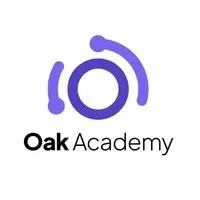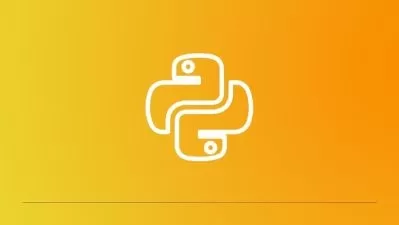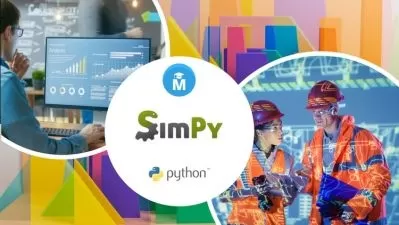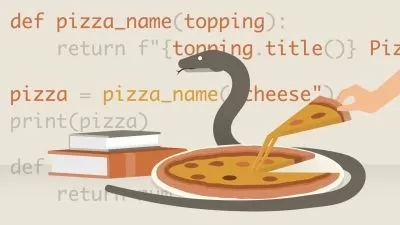Python | Python Programming Language Course Without Coding
Oak Academy,Ali̇ CAVDAR,OAK Academy Team
1:32:15
Description
Python - Learn Python Programming Language Basics without coding with educational, short lectures & quizzes in a fun way
What You'll Learn?
- Python is a general-purpose, object-oriented, high-level programming language.
- Python Introduction
- First Step to Coding
- Using Quotation Marks in Python Coding
- Introduction to Basic Data Structures in Python
- Performing Assignment to Variables
- Performing Complex Assignment to Variables
- Type Conversion
- Arithmetic Operations in Python
- Examining the Print Function in Depth
- Escape Sequence Operations
- Boolean Logic Expressions
- Examining Strings Specifically
- Methods in Strings
- Indexing and Slicing Character String
- Complex Indexing and Slicing Operations
- String Formatting with Arithmetic Operations
- String Formatting With % Operator
- String Formatting With String .Format Method
- String Formatting With f-string Method
- Data Structures-Creation of List
- Reaching List Elements – Indexing and Slicing
- Adding & Modifying & Deleting Elements of List
- Adding and Deleting Elements to List with Methods
- Adding and Deleting by Index in List
- List Methods
- Creation of Tuple
- Reaching Tuple Elements Indexing And Slicing
- Data Structures-Creation of Dictionary
- Reaching Dictionary Elements
- Adding & Changing & Deleting Elements in Dictionary
- Dictionary Methods
- Data Structures-Creation of Set
- Adding & Removing Elements Methods in Sets
- Difference Operation Methods In Sets
- Intersection & Union Methods In Sets
- Asking Questions to Sets with Methods
- Input Functions
- Structure of “if” Statements
- Structure of “if-else” Statements
- Structure of “if-elif-else” Statements
- Structure of Nested “if-elif-else” Statements
- Coordinated Programming with “IF” and “INPUT”
- Ternary Condition
- For Loop in Python
- Using Conditional Expressions and For Loop Together
- List Comprehension
- While Loop in Python
- Break & Continue Command
- Meeting with Functions
- Return Expression in Functions
- Write Docstring in Function
- Using Functions and Conditional Expressions Together
- Arguments and Parameters
- Built-in Functions
Who is this for?
What You Need to Know?
More details
DescriptionWelcome to my " Python | Python Programming Language Course Without Coding " course.
Python - Learn Python Programming Language Basics without coding with educational, short lectures & quizzes in a fun way
Python is a general-purpose, object-oriented, high-level programming language. Whether you work in artificial intelligence or finance or are pursuing a career in web development or data science, Python is one of the most important skills you can learn.
Python instructors at OAK Academy specialize in everything from software development to data analysis and are known for their effective, friendly instruction for students of all levels.
Python's simple syntax is especially suited for desktop, web, and business applications. Python's design philosophy emphasizes readability and usability. Python was developed upon the premise that there should be only one way (and preferably one obvious way) to do things, a philosophy that has resulted in a strict level of code standardization. The core programming language is quite small and the standard library is also large. In fact, Python's large library is one of its greatest benefits, providing a variety of different tools for programmers suited for many different tasks. Python, machine learning, Django, python programming, ethical hacking, machine learning python, python Bootcamp, data science, data analysis
Do you want to learn one of the employer’s most requested skills? If you think so, you are at the right place.
We've designed for you "Python | Python Programming Language Course Without Coding†a straightforward course for the Python programming language.
In the course, you will have down-to-earth way explanations of hands-on projects. With my course, you will learn Python Programming step-by-step. I made Python 3 programming simple and easy with exercises, challenges, and lots of real-life examples.
This Python course is for everyone!
My "Python | Python Programming Language Course Without Coding" is for everyone! If you don’t have any previous experience, not a problem! This course is expertly designed to teach everyone from complete beginners, right through to professionals ( as a refresher).
Why Python?
Python is a general-purpose, high-level, and multi-purpose programming language. The best thing about Python is, that it supports a lot of today’s technology including vast libraries for Twitter, data mining, scientific calculations, designing, back-end server for websites, engineering simulations, artificial learning, augmented reality and what not! Also, it supports all kinds of App development.
No prior knowledge is needed!
Python doesn't need any prior knowledge to learn it and the Ptyhon code is easy to understand for beginners.
What you will learn?
In this course, we will start from the very beginning and go all the way to programming with hands-on examples . We will first learn how to set up a lab and install needed software on your machine. Then during the course, you will learn the fundamentals of Python development like
Python Introduction
First Step to Coding
Using Quotation Marks in Python Coding
Introduction to Basic Data Structures in Python
Performing Assignment to Variables
Performing Complex Assignment to Variables
Type Conversion
Arithmetic Operations in Python
Examining the Print Function in Depth
Escape Sequence Operations
Boolean Logic Expressions
Examining Strings Specifically
Methods in Strings-1
Methods in Strings-2
Methods in Strings-3
Indexing and Slicing Character String
Complex Indexing and Slicing Operations
String Formatting with Arithmetic Operations
String Formatting With % Operator
String Formatting With String.Format Method
String Formatting With f-string Method
Data Structures-Creation of List
Reaching List Elements – Indexing and Slicing
Adding & Modifying & Deleting Elements of List
Adding and Deleting Elements to List with Methods
Adding and Deleting by Index in List
Other List Methods
Creation of Tuple
Reaching Tuple Elements Indexing And Slicing
Data Structures-Creation of Dictionary
Reaching Dictionary Elements
Adding & Changing & Deleting Elements in Dictionary
Dictionary Methods
Data Structures-Creation of Set
Adding & Removing Elements Methods in Sets
Difference Operation Methods In Sets
Intersection & Union Methods In Sets
Asking Questions to Sets with Methods
Input Functions
Structure of “if†Statements
Structure of “if-else†Statements
Structure of “if-elif-else†Statements
Structure of Nested “if-elif-else†Statements
Coordinated Programming with “IF†and “INPUTâ€
Ternary Condition
For Loop in Python
Using Conditional Expressions and For Loop Together
List Comprehension
While Loop in Python
Break & Continue Command
Meeting with Functions
Return Expression in Functions
Write Docstring in Function
Using Functions and Conditional Expressions Together
Arguments and Parameters
Built-in Functions - 1
Built-in Functions - 2
With my up-to-date course, you will have a chance to keep yourself up-to-date and equip yourself with a range of Python programming skills. I am also happy to tell you that I will be constantly available to support your learning and answer questions.
Do not forget ! Python for beginners has the second largest number of job postings relative to all other languages. So it will earn you a lot of money and will bring a great change in your resume.
Why would you want to take this course?
Our answer is simple: The quality of teaching.
When you enroll, you will feel the OAK Academy`s seasoned developers' expertise.
What is python?
Machine learning python is a general-purpose, object-oriented, high-level programming language. Whether you work in artificial intelligence or finance or are pursuing a career in web development or data science, Python bootcamp is one of the most important skills you can learn. Python's simple syntax is especially suited for desktop, web, and business applications. Python's design philosophy emphasizes readability and usability. Python was developed on the premise that there should be only one way (and preferably, one obvious way) to do things, a philosophy that resulted in a strict level of code standardization. The core programming language is quite small and the standard library is also large. In fact, Python's large library is one of its greatest benefits, providing different tools for programmers suited for a variety of tasks.
Python vs. R: What is the Difference?
Python and R are two of today's most popular programming tools. When deciding between Python and R in data science , you need to think about your specific needs. On one hand, Python is relatively easy for beginners to learn, is applicable across many disciplines, has a strict syntax that will help you become a better coder, and is fast to process large datasets. On the other hand, R has over 10,000 packages for data manipulation, is capable of easily making publication-quality graphics, boasts superior capability for statistical modeling, and is more widely used in academia, healthcare, and finance.
What does it mean that Python is object-oriented?
Python is a multi-paradigm language, which means that it supports many data analysis programming approaches. Along with procedural and functional programming styles, Python also supports the object-oriented style of programming. In object-oriented programming, a developer completes a programming project by creating Python objects in code that represent objects in the actual world. These objects can contain both the data and functionality of the real-world object. To generate an object in Python you need a class. You can think of a class as a template. You create the template once, and then use the template to create as many objects as you need. Python classes have attributes to represent data and methods that add functionality. A class representing a car may have attributes like color, speed, and seats and methods like driving, steering, and stopping.
What are the limitations of Python?
Python is a widely used, general-purpose programming language, but it has some limitations. Because Python in machine learning is an interpreted, dynamically typed language, it is slow compared to a compiled, statically typed language like C. Therefore, Python is useful when speed is not that important. Python's dynamic type system also makes it use more memory than some other programming languages, so it is not suited to memory-intensive applications. The Python virtual engine that runs Python code runs single-threaded, making concurrency another limitation of the programming language. Though Python is popular for some types of game development, its higher memory and CPU usage limits its usage for high-quality 3D game development. That being said, computer hardware is getting better and better, and the speed and memory limitations of Python are getting less and less relevant.
How is Python used?
Python is a general programming language used widely across many industries and platforms. One common use of Python is scripting, which means automating tasks in the background. Many of the scripts that ship with Linux operating systems are Python scripts. Python is also a popular language for machine learning, data analytics, data visualization, and data science because its simple syntax makes it easy to quickly build real applications. You can use Python to create desktop applications. Many developers use it to write Linux desktop applications, and it is also an excellent choice for web and game development. Python web frameworks like Flask and Django are a popular choice for developing web applications. Recently, Python is also being used as a language for mobile development via the Kivy third-party library.
What jobs use Python?
Python is a popular language that is used across many industries and in many programming disciplines. DevOps engineers use Python to script website and server deployments. Web developers use Python to build web applications, usually with one of Python's popular web frameworks like Flask or Django. Data scientists and data analysts use Python to build machine learning models, generate data visualizations, and analyze big data. Financial advisors and quants (quantitative analysts) use Python to predict the market and manage money. Data journalists use Python to sort through information and create stories. Machine learning engineers use Python to develop neural networks and artificial intelligent systems.
How do I learn Python on my own?
Python has a simple syntax that makes it an excellent programming language for a beginner to learn. To learn Python on your own, you first must become familiar with the syntax. But you only need to know a little bit about Python syntax to get started writing real code; you will pick up the rest as you go. Depending on the purpose of using it, you can then find a good Python tutorial, book, or course that will teach you the programming language by building a complete application that fits your goals. If you want to develop games, then learn Python game development. If you're going to build web applications, you can find many courses that can teach you that, too. Udemy’s online courses are a great place to start if you want to learn Python on your own.
Video and Audio Production Quality
All our videos are created/produced as high-quality video and audio to provide you the best learning experience.
You will be,
Seeing clearly
Hearing clearly
Moving through the course without distractions
You'll also get:
Lifetime Access to The Course
Fast & Friendly Support in the Q&A section
Udemy Certificate of Completion Ready for Download
Dive in now!
We offer full support, answering any questions.
See you in the " Python | Python Programming Language Course Without Coding " course.
Python - Learn Python Programming Language Basics without coding with educational, short lectures & quizzes in a fun way
Who this course is for:
- Anyone who wants to start learning Python bootcamp
- Anyone who plans a career as Python developer
- Anyone who needs a complete guide on how to start and continue their career with Python in data analysis
- And also, who want to learn how to develop ptyhon coding
- People who want to learn python
- People who want to learn python programming
- People who want to learn python programming, python examples
Welcome to my " Python | Python Programming Language Course Without Coding " course.
Python - Learn Python Programming Language Basics without coding with educational, short lectures & quizzes in a fun way
Python is a general-purpose, object-oriented, high-level programming language. Whether you work in artificial intelligence or finance or are pursuing a career in web development or data science, Python is one of the most important skills you can learn.
Python instructors at OAK Academy specialize in everything from software development to data analysis and are known for their effective, friendly instruction for students of all levels.
Python's simple syntax is especially suited for desktop, web, and business applications. Python's design philosophy emphasizes readability and usability. Python was developed upon the premise that there should be only one way (and preferably one obvious way) to do things, a philosophy that has resulted in a strict level of code standardization. The core programming language is quite small and the standard library is also large. In fact, Python's large library is one of its greatest benefits, providing a variety of different tools for programmers suited for many different tasks. Python, machine learning, Django, python programming, ethical hacking, machine learning python, python Bootcamp, data science, data analysis
Do you want to learn one of the employer’s most requested skills? If you think so, you are at the right place.
We've designed for you "Python | Python Programming Language Course Without Coding†a straightforward course for the Python programming language.
In the course, you will have down-to-earth way explanations of hands-on projects. With my course, you will learn Python Programming step-by-step. I made Python 3 programming simple and easy with exercises, challenges, and lots of real-life examples.
This Python course is for everyone!
My "Python | Python Programming Language Course Without Coding" is for everyone! If you don’t have any previous experience, not a problem! This course is expertly designed to teach everyone from complete beginners, right through to professionals ( as a refresher).
Why Python?
Python is a general-purpose, high-level, and multi-purpose programming language. The best thing about Python is, that it supports a lot of today’s technology including vast libraries for Twitter, data mining, scientific calculations, designing, back-end server for websites, engineering simulations, artificial learning, augmented reality and what not! Also, it supports all kinds of App development.
No prior knowledge is needed!
Python doesn't need any prior knowledge to learn it and the Ptyhon code is easy to understand for beginners.
What you will learn?
In this course, we will start from the very beginning and go all the way to programming with hands-on examples . We will first learn how to set up a lab and install needed software on your machine. Then during the course, you will learn the fundamentals of Python development like
Python Introduction
First Step to Coding
Using Quotation Marks in Python Coding
Introduction to Basic Data Structures in Python
Performing Assignment to Variables
Performing Complex Assignment to Variables
Type Conversion
Arithmetic Operations in Python
Examining the Print Function in Depth
Escape Sequence Operations
Boolean Logic Expressions
Examining Strings Specifically
Methods in Strings-1
Methods in Strings-2
Methods in Strings-3
Indexing and Slicing Character String
Complex Indexing and Slicing Operations
String Formatting with Arithmetic Operations
String Formatting With % Operator
String Formatting With String.Format Method
String Formatting With f-string Method
Data Structures-Creation of List
Reaching List Elements – Indexing and Slicing
Adding & Modifying & Deleting Elements of List
Adding and Deleting Elements to List with Methods
Adding and Deleting by Index in List
Other List Methods
Creation of Tuple
Reaching Tuple Elements Indexing And Slicing
Data Structures-Creation of Dictionary
Reaching Dictionary Elements
Adding & Changing & Deleting Elements in Dictionary
Dictionary Methods
Data Structures-Creation of Set
Adding & Removing Elements Methods in Sets
Difference Operation Methods In Sets
Intersection & Union Methods In Sets
Asking Questions to Sets with Methods
Input Functions
Structure of “if†Statements
Structure of “if-else†Statements
Structure of “if-elif-else†Statements
Structure of Nested “if-elif-else†Statements
Coordinated Programming with “IF†and “INPUTâ€
Ternary Condition
For Loop in Python
Using Conditional Expressions and For Loop Together
List Comprehension
While Loop in Python
Break & Continue Command
Meeting with Functions
Return Expression in Functions
Write Docstring in Function
Using Functions and Conditional Expressions Together
Arguments and Parameters
Built-in Functions - 1
Built-in Functions - 2
With my up-to-date course, you will have a chance to keep yourself up-to-date and equip yourself with a range of Python programming skills. I am also happy to tell you that I will be constantly available to support your learning and answer questions.
Do not forget ! Python for beginners has the second largest number of job postings relative to all other languages. So it will earn you a lot of money and will bring a great change in your resume.
Why would you want to take this course?
Our answer is simple: The quality of teaching.
When you enroll, you will feel the OAK Academy`s seasoned developers' expertise.
What is python?
Machine learning python is a general-purpose, object-oriented, high-level programming language. Whether you work in artificial intelligence or finance or are pursuing a career in web development or data science, Python bootcamp is one of the most important skills you can learn. Python's simple syntax is especially suited for desktop, web, and business applications. Python's design philosophy emphasizes readability and usability. Python was developed on the premise that there should be only one way (and preferably, one obvious way) to do things, a philosophy that resulted in a strict level of code standardization. The core programming language is quite small and the standard library is also large. In fact, Python's large library is one of its greatest benefits, providing different tools for programmers suited for a variety of tasks.
Python vs. R: What is the Difference?
Python and R are two of today's most popular programming tools. When deciding between Python and R in data science , you need to think about your specific needs. On one hand, Python is relatively easy for beginners to learn, is applicable across many disciplines, has a strict syntax that will help you become a better coder, and is fast to process large datasets. On the other hand, R has over 10,000 packages for data manipulation, is capable of easily making publication-quality graphics, boasts superior capability for statistical modeling, and is more widely used in academia, healthcare, and finance.
What does it mean that Python is object-oriented?
Python is a multi-paradigm language, which means that it supports many data analysis programming approaches. Along with procedural and functional programming styles, Python also supports the object-oriented style of programming. In object-oriented programming, a developer completes a programming project by creating Python objects in code that represent objects in the actual world. These objects can contain both the data and functionality of the real-world object. To generate an object in Python you need a class. You can think of a class as a template. You create the template once, and then use the template to create as many objects as you need. Python classes have attributes to represent data and methods that add functionality. A class representing a car may have attributes like color, speed, and seats and methods like driving, steering, and stopping.
What are the limitations of Python?
Python is a widely used, general-purpose programming language, but it has some limitations. Because Python in machine learning is an interpreted, dynamically typed language, it is slow compared to a compiled, statically typed language like C. Therefore, Python is useful when speed is not that important. Python's dynamic type system also makes it use more memory than some other programming languages, so it is not suited to memory-intensive applications. The Python virtual engine that runs Python code runs single-threaded, making concurrency another limitation of the programming language. Though Python is popular for some types of game development, its higher memory and CPU usage limits its usage for high-quality 3D game development. That being said, computer hardware is getting better and better, and the speed and memory limitations of Python are getting less and less relevant.
How is Python used?
Python is a general programming language used widely across many industries and platforms. One common use of Python is scripting, which means automating tasks in the background. Many of the scripts that ship with Linux operating systems are Python scripts. Python is also a popular language for machine learning, data analytics, data visualization, and data science because its simple syntax makes it easy to quickly build real applications. You can use Python to create desktop applications. Many developers use it to write Linux desktop applications, and it is also an excellent choice for web and game development. Python web frameworks like Flask and Django are a popular choice for developing web applications. Recently, Python is also being used as a language for mobile development via the Kivy third-party library.
What jobs use Python?
Python is a popular language that is used across many industries and in many programming disciplines. DevOps engineers use Python to script website and server deployments. Web developers use Python to build web applications, usually with one of Python's popular web frameworks like Flask or Django. Data scientists and data analysts use Python to build machine learning models, generate data visualizations, and analyze big data. Financial advisors and quants (quantitative analysts) use Python to predict the market and manage money. Data journalists use Python to sort through information and create stories. Machine learning engineers use Python to develop neural networks and artificial intelligent systems.
How do I learn Python on my own?
Python has a simple syntax that makes it an excellent programming language for a beginner to learn. To learn Python on your own, you first must become familiar with the syntax. But you only need to know a little bit about Python syntax to get started writing real code; you will pick up the rest as you go. Depending on the purpose of using it, you can then find a good Python tutorial, book, or course that will teach you the programming language by building a complete application that fits your goals. If you want to develop games, then learn Python game development. If you're going to build web applications, you can find many courses that can teach you that, too. Udemy’s online courses are a great place to start if you want to learn Python on your own.
Video and Audio Production Quality
All our videos are created/produced as high-quality video and audio to provide you the best learning experience.
You will be,
Seeing clearly
Hearing clearly
Moving through the course without distractions
You'll also get:
Lifetime Access to The Course
Fast & Friendly Support in the Q&A section
Udemy Certificate of Completion Ready for Download
Dive in now!
We offer full support, answering any questions.
See you in the " Python | Python Programming Language Course Without Coding " course.
Python - Learn Python Programming Language Basics without coding with educational, short lectures & quizzes in a fun way
Who this course is for:
- Anyone who wants to start learning Python bootcamp
- Anyone who plans a career as Python developer
- Anyone who needs a complete guide on how to start and continue their career with Python in data analysis
- And also, who want to learn how to develop ptyhon coding
- People who want to learn python
- People who want to learn python programming
- People who want to learn python programming, python examples
User Reviews
Rating
Oak Academy
Instructor's CoursesAli̇ CAVDAR
Instructor's CoursesOAK Academy Team
Instructor's Courses
Udemy
View courses Udemy- language english
- Training sessions 155
- duration 1:32:15
- Release Date 2023/12/07



















